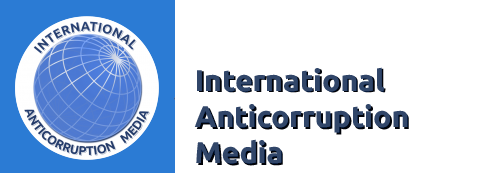This material belongs to: Forbes.
Allegations that corruption is reaching to the highest level of the Sharif government crushed Pakistani stocks on Tuesday. The KSE 100 dropped 2153 points or 4.65% to 44121 from 46274 in the previous trading session, well below its all time high of 52876.46 in May of 2017.
Pakistan’s stock market has been on a tear in recent years. The country’s main KSE index has gained close to 400% since 2009, and 40% in 2016 alone—leaving neighboring markets in the dust.
Pakistan’s equities have had a number of things going their way, like an improving macroeconomic environment—rising economic growth and falling inflation and interest rates. The country’s economy grew close to 6 percent in 2016, up from 4.8 percent in 2015, with inflation running around 4 percent, down from 10 percent four years ago. And the 10-year Treasury bond has yielded 8 percent, down from 12.5 percent four years ago.
| Index/Fund | 12-month Performance |
| Global X MSCI Pakistan (PAK) | 29.25% |
| IShares China (FXI) | 10.28% |
| iShares S&P India 50 (INDY) | 0.93% |
| iShares MSCI Emerging Markets (EEM) | 7.75% |
Source: Finance.yahoo.com 12/23/2016
Then there are a couple of overseas endorsements for Pakistan’s market reforms. Like $1 billion in support from the World Bank – and a couple of domestic acquisitions from foreign suitors, such as the acquisition of Karachi’s K-Electric by Shanghai Electric Power Co.
Another overseas endorsement was the inclusion of Pakistan’s market into MSCI’s emerging market index.
In recent months, Pakistani equities have had a couple of things going against them. In particular, allegations that corruption is reaching the highest levels of the Pakistani government, spooking investors who are afraid of chaos descending on the country.
| Index/Fund | 3-month Performance |
| Global X MSCI Pakistan (PAK) | -11.26% |
| IShares China (FXI) | 5.11% |
| iShares S&P India 50 (INDY) | 6.55% |
| iShares MSCI Emerging Markets (EEM) | 6.52% |
Source: Finance.yahoo.com 7/11/2017
Corruption and cronyism usually lead to large government budget and current account deficits, while constraining competition and technological progress. In spite of some progress in the last five years, Pakistan is still high up on Transparency International’s Corruption Index.
| Country | Corruption Index in 2010 | Corruption Index in 2015 |
| Pakistan | 143/168 | 117/168 |
| India | 87 | 76 |
| Estonia | 26 | 23 |
| USA | 22 | 16 |
Source: Transparency International
Adding to these concerns over the future of Pakistan’s equities is rising US interest rates, which come at a time when the country is already living beyond its means, as evidenced by persistent current account deficits, government debt, and external debt.
Pakistan recorded a Current Account deficit of 1.20 percent of the country’s GDP in 2016 fiscal year (July 2015 – June 2016), according to Tradingeconomics.com. In July – Dec 2016, the current account deficit was recorded at 2.2 percent of the country’s Gross Domestic Product. Current Account to GDP in Pakistan averaged -2.20 percent from 1980 until 2016.
Pakistan amassed a government debt equivalent to 66.50 percent of the country’s Gross Domestic Product in 2016. Government Debt to GDP in Pakistan averaged 69.39 percent from 1994 until 2016.
External Debt in Pakistan increased to 75747 USD Million in the first quarter of 2017 from 74126 USD Million in the fourth quarter of 2016. The country’s external debt averaged 51689.12 USD Million from 2002 until 2017.
Meanwhile, foreign Exchange Reserves in Pakistan decreased to 21019.20 USD Million in April from 21572.10 USD Million in March of 2017. Foreign Exchange Reserves in Pakistan averaged 15573.05 USD Million from 1998 until 2017.
Pakistan amassed a capital and financial account deficit of 989 USD Million in the first quarter of 2017. Capital Flows in Pakistan averaged -782.17 USD Million from 2011 until 2017.
That’s why investors should think twice before pouring more money into Pakistani stocks s at this point.
 info@anticorr.media
info@anticorr.media

